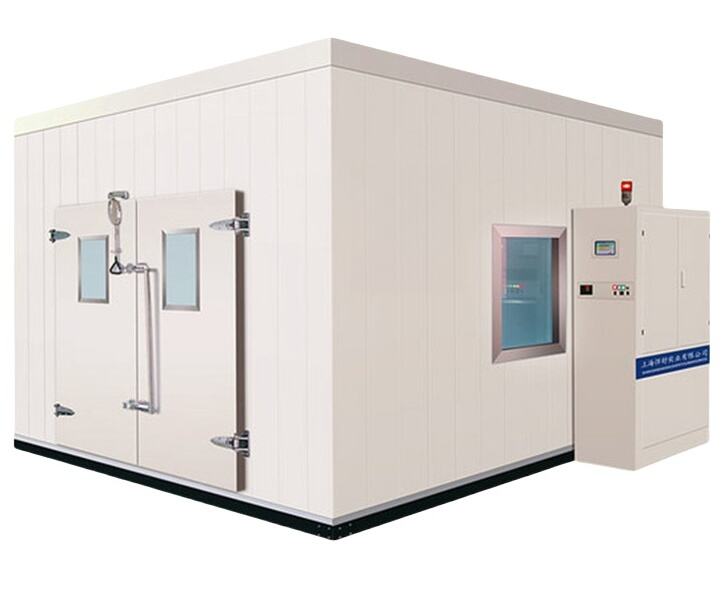Assessing Storage Needs and Capacity
Product Type and Temperature Sensitivity
Knowing what kind of items are being stored determines the right cold storage conditions required. Perishables, meds, and chemicals all have different temperature needs. Take fresh fruits and veggies for example they usually need fridge temps around 0 to 4 degrees Celsius. Meds sometimes require freezing temperatures though. Temperature matters because if things get too warm, stuff spoils faster and doesn't last as long. Industry guidelines actually spell out exact temperature ranges for various products so companies can keep their goods safe and maintain quality standards across the board.
Calculating Required Storage Volume
Getting the storage volume right matters a lot when managing cold storage facilities effectively. Begin with collecting all the relevant measurements about products themselves, their packaging sizes, and how they stack together. These details help create accurate volume estimates that actually leave room for those essential shelves and walkways everyone forgets about. Don't overlook what happens down the road either. Planning for inventory expansion makes sense because expanding later costs way more money and headaches. Many warehouses now rely on specialized software programs to figure out exactly how much stuff fits where, taking into account whether staff can reach everything easily. Good planning means fewer surprises and smoother day to day operations overall.
Planning for Business Growth
Looking at what's happening in the market and where it might go next matters a lot for companies wanting to grow their cold storage operations. When businesses figure out how much extra space they'll probably need soon, they can implement adaptable solutions that handle demand changes without breaking the bank on new buildings or equipment. Talking to people who know the industry inside out often gives companies real world tactics for expanding their facilities while still meeting all the regulations and running efficiently. Getting ahead of these trends helps keep a company competitive during those inevitable ups and downs in the market, which makes long term growth actually possible instead of just theoretical.
Temperature Control and Climate Specifications

Industry-Specific Temperature Ranges
Getting temperature control right matters a lot in various fields including food processing, healthcare settings, and other industrial operations. Different areas need their own special conditions to stop things from going bad and keep everyone safe. Take the food business for example they usually work with temps just a bit above freezing all the way down to below zero points. Hospitals and clinics meanwhile generally keep meds and biological products around 2 to 8 degrees Celsius. When companies mess up on these temperature requirements, products spoil faster and people get sick which ruins what was made and puts customers at risk. Groups such as the FDA regularly release new info so companies can follow best practices for storing stuff properly. This helps maintain good quality while also protecting folks who actually consume whatever comes out of those processes.
Implementing Air Cooled Condensing Units
Air cooled condensing units bring real advantages when compared to older system types. For starters, they consume less power which cuts down on running expenses and helps reduce carbon footprints. Installation tends to be much easier than with water cooled models since there's no need for complex plumbing work. Most businesses find this makes them a smart pick for various applications across different industries. Placement matters though - getting the location right can make all the difference between good performance and wasted potential. A little thought about where exactly to put these units goes a long way toward both optimal operation and reduced environmental impact. Maintenance isn't complicated either. Routine checks and basic cleaning usually take care of most issues, saving money over time. All told, these units help companies run things more sustainably without breaking the bank, thanks to their efficient design combined with simple maintenance requirements.
Energy Efficiency and Sustainable Design
Insulation Materials: Galvanized vs. Sustainable Steel
The type of insulation used in cold storage facilities really affects how much energy they consume and their overall sustainability. When looking at galvanized steel versus sustainable steel options, there are noticeable differences in how well they handle heat transfer, their energy needs, and what kind of mark they leave on the environment. Sustainable steel tends to perform better when it comes to keeping things insulated, which means less money spent on heating and cooling because the inside stays at a steady temperature. Good insulation matters a lot since temperature swings cost extra to fix and can actually damage stored products over time. Real world examples show companies saving money month after month simply by choosing better insulation materials, proving that going green isn't just good for the planet but also makes business sense in the long run.
Reducing Operational Costs Through Efficiency
Putting energy saving tech into cold storage warehouses actually cuts down running costs quite a bit without messing with how well things are stored. Things like newer refrigeration units and better insulation slash power bills month after month. Companies that spend money upfront on these upgrades usually see their cash back within a few years, sometimes even faster than expected. The numbers tell the story pretty clearly when it comes to saving money in the long run. Smart operators keep an eye on their energy usage patterns throughout the day, especially during busy periods when demand spikes. Making small adjustments based on actual usage data helps maintain both cost efficiency and product integrity. Many warehouses report cutting their electricity expenses by around 30% just from implementing basic monitoring systems and regular maintenance checks.
Structural Design and Refrigeration Systems
Prefabricated Steel Structure Solutions
Cold storage facilities benefit greatly from prefabricated steel structures because they cut down on assembly time and save money on labor costs. The design focuses on getting things up quickly so businesses don't lose valuable operating hours while waiting for construction to finish. What's interesting about these steel buildings is their ability to be customized for better energy performance. Many include special insulation materials and other green tech features that lower both environmental footprints and day-to-day expenses. Take the insulated panels for example they keep temperatures stable inside the facility, something absolutely essential when storing perishable goods. Looking at actual implementations across various warehouses shows just how effective this approach can be. Companies report smoother operations after switching to prefabricated solutions since there's far less interruption compared to traditional building methods during those critical construction periods.
Selecting Commercial Condensing Units
Picking out the right commercial condensing unit makes all the difference when it comes to keeping a cold room properly chilled. Facility owners need to pay attention to their space dimensions and what kind of cooling they actually require. Energy ratings matter quite a bit here because going for something more efficient will cut down on running costs in the long run. Getting the size right isn't just about numbers either. If a unit is too small or too big, problems start piling up fast from wasted electricity to breakdowns that nobody wants. When the condenser matches exactly what the cold storage needs, everything runs smoothly without putting unnecessary strain on components. Smart businesses look at these factors first before making any purchase decisions since good equipment lasts longer while saving money month after month.
Compliance and Budget Considerations
Meeting Regulatory Standards
Getting cold storage facilities up to speed with all the required regulations matters a lot in industries dealing with food safety and health rules. The truth is, these standards help stop contamination problems and keep perishable items safe during storage. Take HACCP for example it's one of those key systems that lays out pretty strict rules about temperature management and how clean things need to be kept inside these facilities. Cold storage operators would do well to reach out to their local health authorities and check what industry groups recommend for best practices. Regular inspections aren't just something to tick off the list they're actually important for staying compliant and avoiding fines that can really hurt the bottom line when they come due. Keeping compliance procedures fresh and updated makes sense on multiple levels. It helps prevent getting caught with outdated protocols, sure, but it also shows customers and regulators alike that the facility takes food safety seriously from day one.
Total Cost of Ownership Analysis
Looking at cold storage systems? A good Total Cost of Ownership (TCO) analysis is pretty much essential if businesses want to make smart investments. The TCO covers everything from initial costs like building the facility and buying equipment, through ongoing expenses such as electricity bills and staff wages, right down to those maintenance costs that pop up over time. When companies actually break down all these numbers, they start seeing where their money really goes and how different choices affect their bottom line. Companies that take this approach tend to have better luck negotiating with finance teams and getting sign off on projects. Take energy efficient refrigeration systems for example many warehouses discover that running a proper TCO calculation helps show management exactly what kind of savings they'll get over years rather than months. Getting clear about these financial aspects makes all the difference when planning cold room installations, especially since most operators know that cutting corners now usually means paying more later.

